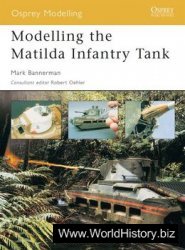Between 1916 and 1918, the Mexican economy passed its nadir and began a slow recovery. Carranza relied on hacendados to resume agricultural production, feeling that was the surest way to alleviate the disastrous agricultural scarcity. The 1918 corn crop was only a third or a quarter of the usual 150 million bushels.2
The commodity boom induced by the First World War favored the Mexican economy. As a result of increased prices for metals, oil, and henequen, exports nearly doubled in value between 1916 and 1920. Once the war was over, the received wisdom in the United States and Great Britain was that it would be best for the world to simply return to the old economic system. Carranza’s Secretary of Industry and Commerce Alberto Pani shared this view, advocating a continued reliance on raw material exports, albeit with further processing in Mexico.3
Financing economic recovery presented Carranza with a dilemma. He wished to exert control over exports and the rural economy—two sectors dominated by foreigners. At the same time, he desperately needed foreign investment. Wealthy Mexicans shied away from new investments, deterred by continued political instability, the radical tone of the 1917 constitution, and the increased strength of labor organizations. Since Mexico was already in default on its foreign loans, there was little likelihood of obtaining loans outside Mexico. Given the lack of other sources, there was general agreement, even among Mexican industrialists, that Mexico would have to rely on private foreign investors to rebuild the economy. With their enormous increases in efficiency and output, American companies seemly held the promise of endless improvements in material well-being.4
A few days after he took office in 1924, Calles declared, “The revolutionary movement has entered its constructive phase.” This “constructive phase” was based on private enterprise and a continued reliance on exports and foreign investment. A central bank, modeled on the U. S. Federal Reserve Bank, was created in 1925. Until its creation, private corporations, many of them foreign, dominated the Mexican banking system. As a result, there was little the government could do to insure that banking activity conformed to its economic goals. To entice Mexican bankers back into the market, they were virtually allowed to write banking regulations themselves.5
During the Calles administration (1924—1928), Mexico began to shift away from its reliance on mining, oil, and subsistence agriculture towards manufacturing and commercial agriculture—the sectors that would undergird the economy in the latter half of the twentieth century. Calles felt that, in the absence of other sources of investment, the state should create banks, reservoirs, and roads. Officials frequently used the term “businesslike” untranslated in Spanish documents.6
The combination of political order, a revamped banking system, and government austerity began to attract foreign investors. Such investment was welcomed since the political elite felt that if the country relied exclusively on domestic investment, development would be postponed indefinitely. Mexico’s wealthy also became confident enough to begin investing. Calles’s Treasury Minister Alberto Pani referred to Mexicans who invested productively as “revolutionary capitalists.”7
Pani’s phrase notwithstanding, there was little one could call revolutionary about the Mexican economy. Mexico was tied more closely than ever to the United States by trade. Many members of the old Porfirian business community had survived and even prospered, working in cooperation with the state. Oil, silver, and industrial minerals accounted for up to 80 percent of exports. Large estates remained intact. Between 1919 and 1929, U. S. direct investment in Mexico increased from $644 million to $709 million. In 1935, foreigners controlled 98 percent of mining, 99 percent of the oil industry, 79 percent of the railroad and trolley system, and 100 percent of electrical power generation. Manuel Gomez Morin, who later founded the National Action Party (PAN), commented, “Despite the nationalism which our laws proclaim, we are losing control day by day of our economy and, with it, all hope that one day we may fully control it.”8
Export industries created little consumer demand, since in 1930 mining and oil together employed only 1 percent of the work force. Labor was distributed in much the same way it had been thirty-five years earlier. In 1930, agriculture employed 68.7 per cent of workers, compared to 66.5 per cent in 1895. Manufacturing employed 9.9 per cent of workers, down from 11.5 per cent in 1895.9
Between 1921 and 1929, the economy grew at 1.7 percent a year. This growth largely resulted from raw material exports. In 1929, exports were 265 percent above the 1909—1910 level. Mineral exports had increased by 336 percent and agricultural exports by 190 percent. As had been the case under Diaz, exports did little for the economy as a whole. Wages in the export sector and export taxes remained low, and ties to the rest of the economy were limited.10




 World History
World History









